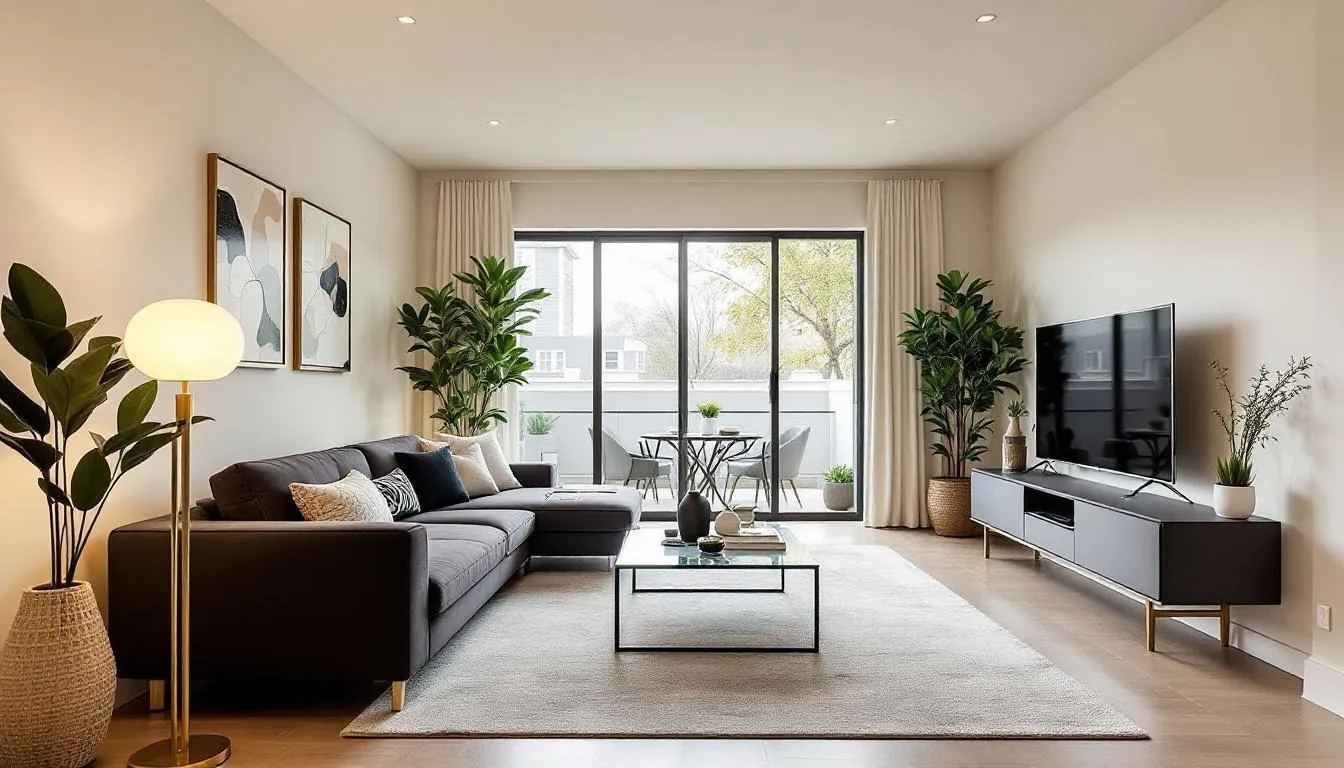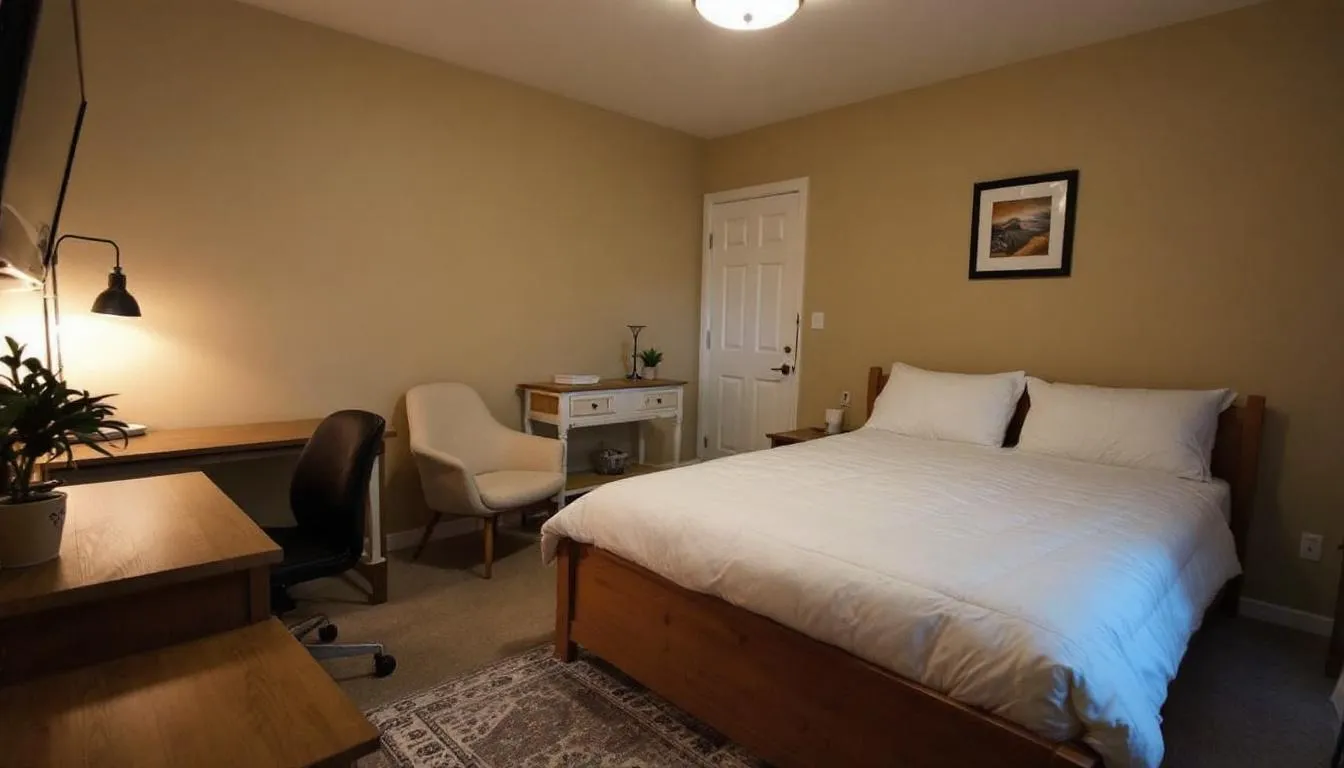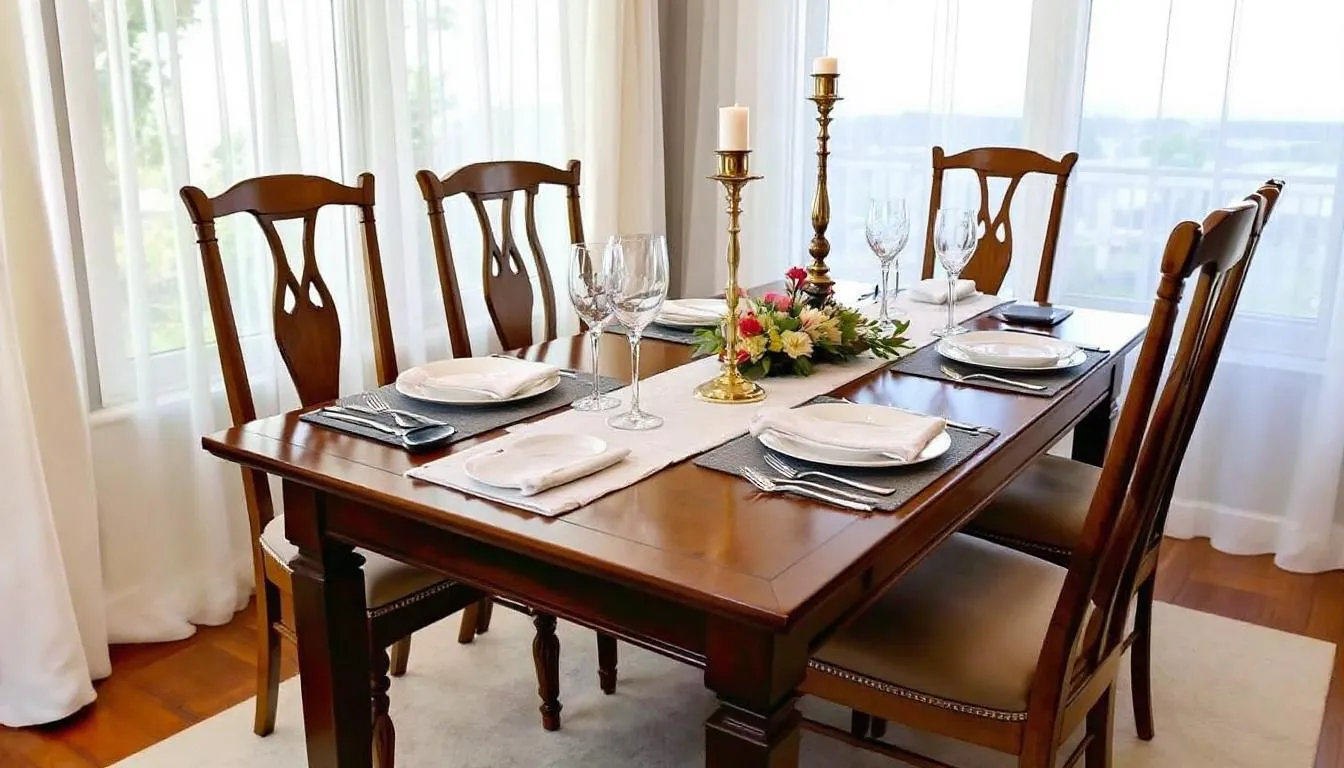Furnishing a vacation rental requires a strategic investment that directly impacts your property’s booking success and guest satisfaction. With vacation rental furnishing costs ranging from $8,000 to $45,000 or more, understanding the exact cost breakdown helps property owners make informed decisions that maximize both guest appeal and return on investment. Unlike furnishing your personal home, […]

Furnishing a vacation rental requires a strategic investment that directly impacts your property’s booking success and guest satisfaction. With vacation rental furnishing costs ranging from $8,000 to $45,000 or more, understanding the exact cost breakdown helps property owners make informed decisions that maximize both guest appeal and return on investment.
Unlike furnishing your personal home, vacation rental properties demand durable furniture, complete guest supply sets, and amenities that meet evolving traveler expectations. The average cost to furnish a vacation rental varies significantly based on property size, target market positioning, and quality tier, making careful budget planning essential for rental property success.
In this comprehensive guide, we’ll break down furnishing costs by room type, property size, and essential amenities while exploring strategies to optimize your furnishing budget without compromising guest experience.
The cost to furnish a vacation rental spans a wide range depending on several key factors. Most vacation rental properties fall within the $8,000 to $45,000 furnishing budget range, with costs varying dramatically based on property size, target guest demographics, and desired quality level.

Here’s the complete cost breakdown for different property tiers:
The cost per square foot typically ranges from $12-$25, with higher-end properties requiring premium furnishings and extensive amenity packages. These furnishing costs have risen slightly due to inflation and increased guest expectations for hotel-quality comfort and Instagram-worthy interiors.
Property owners must account for the fundamental differences between residential and vacation rental furnishing. Rental properties require neutral, durable furniture that withstands frequent turnover, complete guest-ready supply sets including multiple linens and extra towels, and safety features that meet liability requirements.
Understanding room-specific budgets helps property owners prioritize spending and ensure no essential areas are overlooked. Each room serves distinct guest needs and requires careful consideration of durability, functionality, and visual appeal.
The key difference between home furnishings and vacation rental supplies lies in the emphasis on durability, ease of maintenance, and complete guest readiness. Every room must function independently while contributing to the overall guest experience that drives positive reviews and repeat bookings.
The primary bedroom sets the tone for guest comfort and directly impacts sleep quality reviews. Budget allocation should prioritize a quality mattress and bed frame, as these elements most significantly affect guest satisfaction.
Essential master bedroom furniture items:
Solid wood frames provide durability and visual appeal, while memory foam or hybrid mattresses offer the comfort guests expect. Blackout curtains have become essential rather than optional, as guests increasingly prioritize sleep quality during their stays.
Storage solutions including luggage racks prevent floor damage and appeal particularly to business travelers. Multiple pillow firmness options accommodate diverse guest preferences and demonstrate attention to comfort details.
Guest rooms require flexible furniture arrangements that accommodate various party sizes and sleeping preferences. The total cost varies based on bed configuration and storage needs.
Guest bedroom essentials:
Many vacation rental owners choose full or double bed sizes for guest rooms to maximize flexibility while maintaining comfort. Sofa beds serve dual purposes in living areas, providing additional sleeping capacity without dedicated bedroom space.
Quality furniture selection should emphasize easy assembly and replacement, as guest rooms experience varying usage patterns throughout booking seasons.
Living rooms function as primary gathering spaces and significantly influence guest satisfaction scores. This room often appears in listing photos and requires careful balance between style, durability, and functionality.
Living room furniture and decor budget:
Performance fabrics resist stains and wear while maintaining visual appeal. Smart TVs with streaming capabilities meet modern guest expectations, though clear instructions help prevent technical issues.
Furniture arrangement should accommodate both intimate conversations and larger group gatherings. Coffee tables with storage provide functional space while reducing clutter, and table lamps create ambient lighting that photographs well for listing updates.
Kitchen amenities directly impact guest convenience and booking appeal, especially for longer stays and family groups. Complete cookware and appliance sets demonstrate property quality and attention to guest needs.
Kitchen furnishing essentials:
Professional-grade cookware withstands frequent use and cleaning, while complete place settings for twice the maximum occupancy accommodate entertaining and reduce replacement frequency. Dining tables should seat the property’s maximum capacity comfortably.
Coffee makers, particularly single-serve models, rank among the most appreciated amenities. Starter pantry supplies including coffee, sugar, and basic seasonings create positive first impressions and demonstrate hospitality.
Bathroom amenities significantly impact cleanliness perceptions and guest comfort. Quality towels and thoughtful storage solutions distinguish professional rentals from amateur operations.
Bathroom furnishing breakdown:
White cotton towels remain the professional standard due to bleaching capabilities and replacement ease. Multiple towel sets per bathroom accommodate quick turnovers and guest preferences.
Hotel-style amenities including travel-size shampoo and conditioner demonstrate attention to guest needs. First aid supplies and basic toiletries serve as backup options for forgotten items.
Outdoor spaces significantly enhance property appeal and justify premium pricing, particularly in desirable climates. Weather-resistant materials and thoughtful layouts create valuable additional living space.
Outdoor furniture and amenities:
Gas grills prove more popular than charcoal alternatives due to convenience and safety considerations. Comfortable seating arrangements encourage outdoor relaxation and create opportunities for memorable guest experiences.
Proper lighting extends outdoor space usability into evening hours, while storage solutions protect cushions and equipment from weather damage.
Property size directly correlates with furnishing budget requirements, though cost per square foot decreases as size increases due to shared common areas and bulk purchasing opportunities.
Furnishing costs by square footage:
Larger properties require proportionally more furniture items but benefit from economies of scale when purchasing linens, cookware, and decorative items. The house size determines not only furniture quantity but also quality expectations, as larger properties typically target higher-income demographics.
Multi-bedroom properties need additional considerations including varied bed sizes, multiple seating areas, and expanded kitchen capacity. Storage solutions become increasingly important as guest count and personal belongings increase.
Beyond basic furniture, vacation rentals require comprehensive supply inventories that ensure guest comfort and operational efficiency. These essential pieces often determine guest satisfaction more than expensive furniture items.
Complete guest supply inventory:
Many property managers opt for professional supply services to ensure consistency and compliance with local health regulations. Bulk purchasing through wholesale channels significantly reduces per-unit costs while maintaining quality standards.
Welcome baskets containing local specialties create positive first impressions and demonstrate community knowledge. Guest information guides highlighting nearby attractions and restaurant recommendations enhance the overall stay experience.
Modern vacation rentals require technology integration that enhances guest convenience while streamlining property management. Smart home features often justify premium pricing and improve operational efficiency.
Essential technology investments:
Smart locks eliminate key exchange logistics while providing access monitoring and remote management capabilities. High-speed WiFi with mesh network coverage ensures connectivity throughout larger properties.
Streaming devices preloaded with popular services meet entertainment expectations, while clear instruction cards prevent technical support calls. USB charging stations in bedrooms and common areas address universal guest needs.
Guest comfort extends beyond basic furnishings to include thoughtful amenities that demonstrate hospitality and attention to detail. These supplies often generate the most positive review mentions.
Comfort and convenience items:
Professional-grade cleaning supplies enable guests to maintain cleanliness standards while reducing housekeeping frequency for longer stays. Emergency supplies including flashlights and basic tools address common issues without requiring immediate property management intervention.
Local guidebooks and restaurant menus demonstrate area knowledge while reducing guest inquiry volume. Personal touches like local coffee or artisanal snacks create memorable experiences that encourage repeat bookings.
Several strategic factors influence total furnishing investment beyond basic room requirements. Understanding these variables helps property owners optimize spending for their specific market position.
Market positioning considerations:
Insurance and liability considerations affect furniture selection, as items must meet safety codes and fire-retardant requirements. Premium furnishings often qualify for replacement coverage, while budget items may require full replacement costs from owner funds.
Investment property tax implications include depreciation schedules for furniture and equipment, typically spread over 5-7 years according to IRS guidelines. All vacation rental purchases qualify as business expenses, reducing effective furnishing costs through tax savings.
Geographic location influences both product availability and style preferences. Coastal properties require salt-air-resistant materials, while mountain retreats need heating considerations and weather-appropriate amenities.
Strategic shopping and purchasing decisions can significantly reduce furnishing costs without compromising guest satisfaction or property appeal. Smart property owners balance cost savings with long-term durability and guest experience quality.
Cost optimization strategies:
Durable, easy-to-clean materials prove more economical long-term despite higher initial costs. Performance fabrics, stain-resistant finishes, and modular designs reduce replacement frequency and maintenance expenses.
Refurbished furniture offers significant savings for non-upholstered items like dining tables, dressers, and coffee tables. Quality vintage pieces often provide character and durability exceeding new budget alternatives.
Strategic timing involves purchasing major furniture items during major sales events while buying linens and supplies through consistent wholesale relationships. Inventory management systems help track replacement schedules and bulk ordering opportunities.

Furnishing quality directly correlates with booking performance, guest satisfaction scores, and achievable nightly rates. Property owners must view furnishing as revenue-generating investment rather than pure expense.
Revenue impact factors:
The typical break-even timeline for furnishing investments ranges from 12-18 months at average occupancy rates, often shorter in high-demand year-round markets. Premium furnishing packages can achieve break-even within 8-12 months through higher rates and improved occupancy.
Guest review analysis shows furniture quality, comfort, and completeness among the most frequently mentioned factors in positive reviews. Negative reviews often cite uncomfortable beds, insufficient seating, or missing amenities as primary complaints.
Upgrading existing furnishings often provides better ROI than complete replacement, particularly for established properties with existing guest bases. Strategic improvements like new bedding, additional seating, or enhanced lighting can significantly impact performance without major investment.
Platform algorithm preferences favor properties with higher guest satisfaction scores, creating compounding benefits from quality furnishing investments. Improved search visibility and booking frequency often exceed direct rate premium benefits.
Property owners must evaluate professional design services against DIY furnishing approaches based on budget, timeline, and expertise requirements. Each approach offers distinct advantages depending on property scope and owner capabilities.
Professional furnishing services:
Professional services deliver expertise in vacation rental-specific requirements, established supplier relationships, and turnkey installation. Designers understand guest expectations, durability requirements, and local market standards that maximize investment returns.
DIY approach considerations:
DIY furnishing allows complete control over budget allocation and style decisions while potentially reducing costs through direct purchasing. However, hidden costs include delivery fees, assembly time, and potential mistakes requiring replacement or correction.
Timeline considerations favor professional services for quick property launches, while DIY approaches work better for owners with flexible opening schedules. Professional photography and staging services often justify their costs through improved listing performance regardless of furnishing approach.
Many successful vacation rental owners combine approaches, using professional consultation for initial planning and DIY execution for implementation. This hybrid strategy balances expertise with cost control while ensuring proper guest experience fundamentals.
The exact cost depends significantly on local market conditions, property specifications, and owner experience levels. First-time vacation rental owners often benefit from professional guidance, while experienced operators may prefer DIY control and cost savings.

Investment property financing may influence approach selection, as professional services often provide detailed documentation useful for loan applications and insurance purposes. Complete invoicing and professional installation records support depreciation claims and replacement coverage.
When to choose professional services:
When DIY approaches work best:
The average house furnishing project benefits from hybrid approaches that leverage professional expertise for major decisions while allowing owner control over implementation details and budget management.
Successful vacation rental furnishing requires balancing guest expectations, operational requirements, and financial constraints. Whether through professional services or DIY approaches, the goal remains creating memorable guest experiences that drive positive reviews, repeat bookings, and sustainable profitability.
Quality furnishings represent a significant investment in your rental property’s success, but strategic planning and informed decision-making ensure this investment generates consistent returns through enhanced guest satisfaction and improved booking performance.
![]()